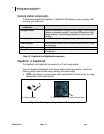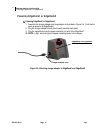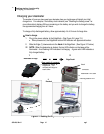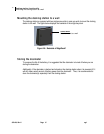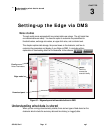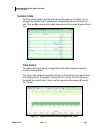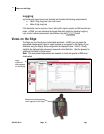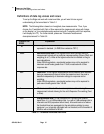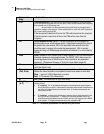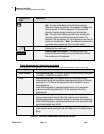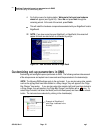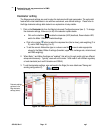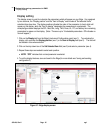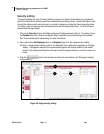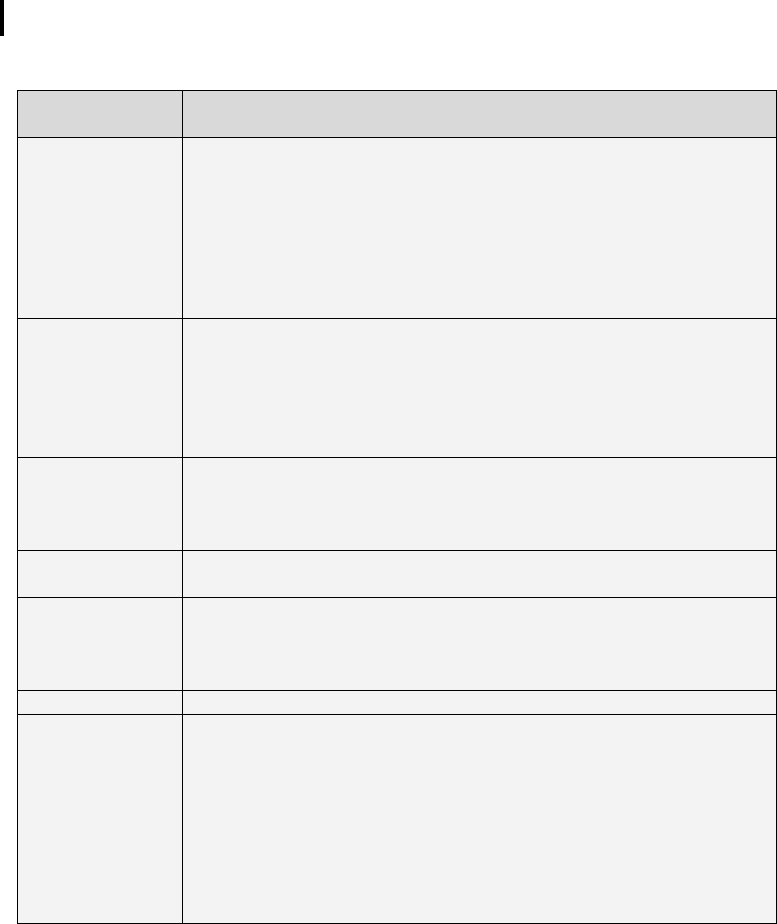
Views on the Edge
Definitions of data log values and views
053-644, Rev H Page 20 eg4
20
Views on the
Edge
Explanation
L
TWA
Time-weighted average - is the sound level (in dB) that is accumulated for any time period but
with its average level computed over an 8-hour period. TWA is usually measured with A-weighting,
Slow response, and a 5 dB exchange rate.
All sound levels at or above the threshold level (cutoff level) are averaged into the
calculations relating to noise exposure. TWA is calculated with no cutoff, with cutoff 1 (typically 80
dB), or with cutoff 2 (typically 90 dB).
If the time period is less than 8 hours, the TWA will be less than the Lavg/Leq.
If the time period is more than 8 hours, the TWA will be more than the
Lavg/Leq.
L
AE
Sound Exposure Level (SEL) – The sound exposure level averages the
sampled sound over a one second period. Assuming the sampled run time to
be greater than one second, SEL is the equivalent one-second noise that
would be equal in energy to the noise that was sampled. SEL is typically
measured using a 3 dB exchange rate without a threshold. (L
AE
is not used by
OSHA.)
Dose
Dose - Related to the Criterion Level, a dose reading of 100% is the maximum
allowable exposure to accumulated noise. For OSHA, 100% dose occurs for
an average sound level of 90 dB over an 8 hour period (or any equivalent
exposure). (Please see Glossary of Terms for more details, page 60).
UL
Upper Limit - is the amount of time that the sound level exceeds a preset
level (the Upper Limit).
Response Level
(Fast, Slow)
Typically, noise is not constant. Using a response of Slow or Fast simply
flattens the noise fluctuation and makes the sound level easier to work with.
Slow: 1 second (1,000 milliseconds, or msec)
Fast: 0.125 second (125 milliseconds)
RT
Run Time - The overall time of your noise study.
Weighting
(A, C)
A and C weighting are types of frequency filters that cover the frequency range of human hearing
(20Hz to 20 kHz).
• “A” weighting: The “A” weighted filter attempts to make the dosimeter respond closer to
the way the human ear hears. It attenuates the frequencies below several hundred hertz as
well as the high frequencies above six thousand hertz. “A” weighted measurements are
often reported as dBA.
• “C” weighting: provides a fairly flat frequency response with only slight attenuation of the
very high and very low frequencies. “C” weighting is intended to represent how the ear
perceives sound at high decibel levels and is often used as a “flat” response when LINEAR
is not available. “C” weighted measurements are often reported as dBC.
Table 3-1: Dosimeter parameters and definitions (continued



